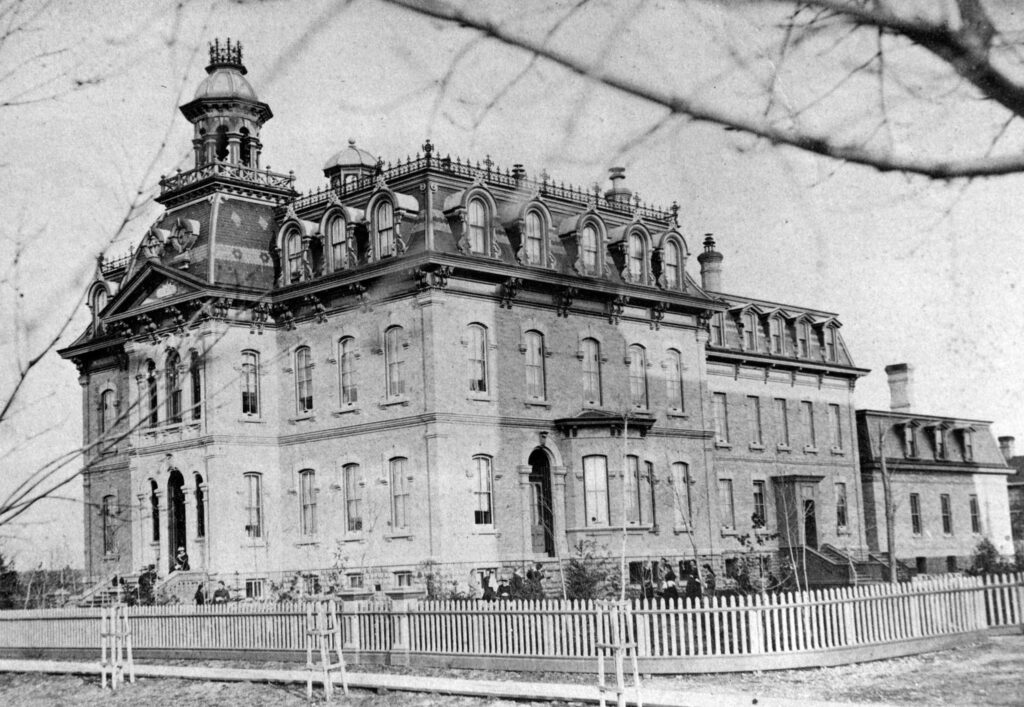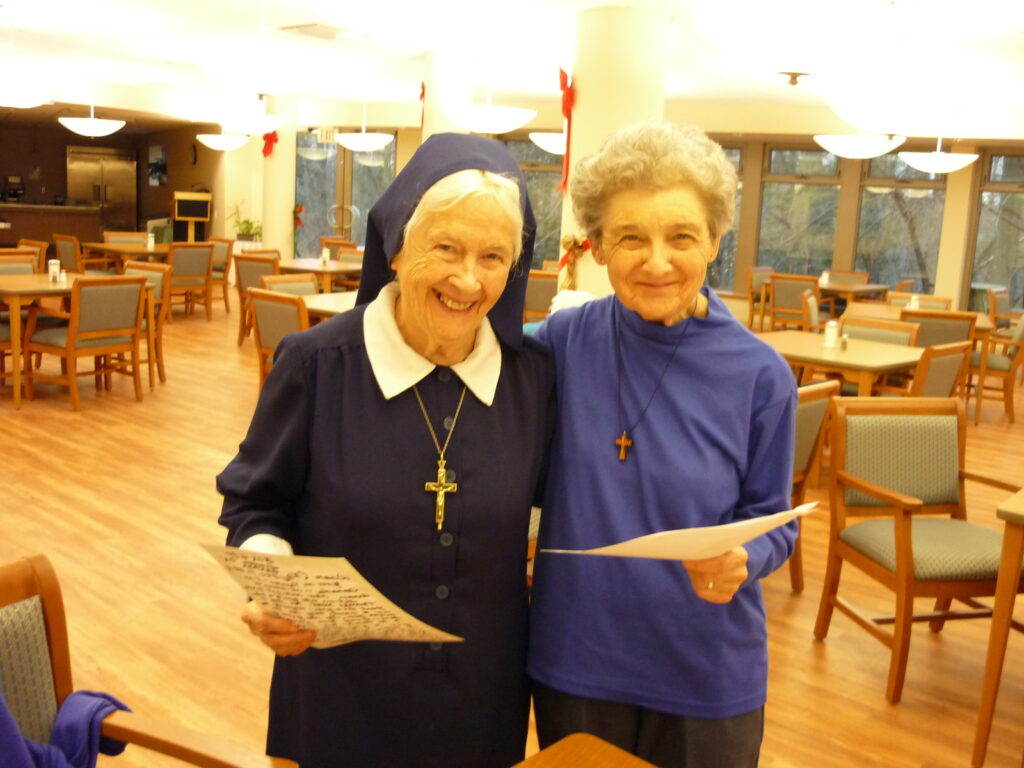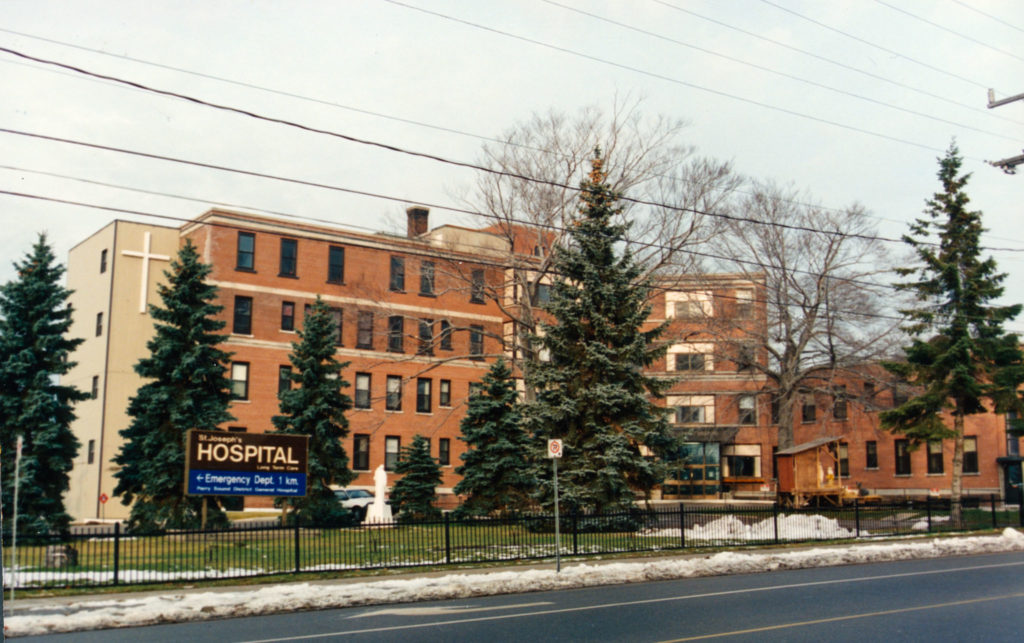Preserving and caring for records of enduring value means that the legacy of a person or community is kept for future generations. This is the mission of our archives. We hope this short video captures this.
Peterborough
Religious antagonism initiates community gem
By Joe Keast
Although in the 21st century differences between different Christian denominations are mostly no longer a source of antagonism, these differences had a significant impact on the young town of Peterborough toward the end of the 19th century.
One systemic example of this antagonism was the provision of health care. In the mid-1880’s the widow of a wealthy Peterborough businessman, Mrs. Charlotte Nichols, set aside $100,00 for the establishment a hospital in the young, growing town. This important addition to the community was to be managed by a specifically chosen group of business and professional leaders – representatives of the various Protestant denominations, along with the mayor (unless he were not a Protestant). The Nichols Hospital’s services were specifically and exclusively “for the benefit the Protestant population.”
As word of this development reached the attention of Bishop Joseph Thomas Dowling of the Diocese of Peterborough, he began making plans for a hospital whose vision would be more catholic. Bishop Dowling purchased a site across the river in Ashburnham Village – referred as St. Leonard’s Grove and hired local architect John Belcher to design the building. In 1889 Bishop Dowling was transferred to the Hamilton diocese and was succeeded by Bishop Richard Alphonsus O’Connor. With work on the hospital building proceeding, Bishop O’Connor approached the leaders of the Toronto Sisters of St. Joseph, who in previous years had established several hospitals in southern Ontario and Port Arthur and who had convents dedicated to Catholic education in the Peterborough diocese. He asked the Sisters to agree, not only to staff the new hospital, but to allow the formation of a new Congregation for the Peterborough diocese comprising of the Toronto Sisters’ establishments in Cobourg, Port Arthur, and Fort William as well as staff for the Peterborough hospital and a school in Lindsay to be assumed from the Loretto Sisters to serve as a motherhouse for the new Congregation.

With some trepidation, the Toronto Congregation generously agreed to this request. In August of 1890 the construction of the new hospital neared completion. Under the direction of Mother M. de Pazzi, General Superior of the Toronto Congregation, those Sisters who could, gathered in the empty building to hold retreat and the election of the first leadership group. The retreat ended on August 15th with the election of Mother Austin Doran as the General Superior of the new congregation. A few days later, on August 20, Bishop O’Connor presided over the dedication and official opening of the hospital. He proclaimed that “its doors will be open to the sick of all denominations, to Jew and Gentile, Catholic and Protestant.”
Mayor Stevenson was moved by this universal decree and agreed that the town would co-operate in retiring the remaining debt. The first Sisters to staff the new hospital were Mother Anselm (O’Connor), Sister Baptista (Keane), Sister Geraldine (Chidwick), and Sister Hilary (Irwin). The next year the Sisters expanded their ministry at the hospital by welcoming 40 people in need of care – the aged, blind, destitute, and orphans. This group had been cared for by the Toronto Sisters, but it was felt that they would be better cared for in their hometown. Eventually this led to the establishment of the House of Providence to care for the elderly and destitute on the hospital grounds, and St. Vincent’s Orphanage to care for children in town.

Over the next century, St. Joseph’s Hospital served the citizens of Peterborough City and County with compassionate, professional medical care. During this time the hospital underwent a series of major additions and the level of medical care expanded to keep up with all the changes and improvements in medical care. In the 1990’s, when the cost and complexity of providing medical care became onerous, the provincial government mandated the St. Joseph’s and Civic Hospital (the successor to the Nichols Hospital) be amalgamated to form the Peterborough Regional Health Center.
Thus, an endeavor which came to be because of religious antagonism blossomed, and when the time was right evolved into the modern medical facility that residents of Peterborough enjoy today.
International Human Rights Day
On December 10, each year for the past ten years, the Sisters of St. Joseph have helped to protect human rights around the world by taking part in Amnesty International’s global write-a-thon, Write for Rights.
What is Amnesty International?
After reading about a couple of students in Portugal who had been imprisoned for seven years after raising their glasses in a toast to freedom; British lawyer, Peter Benenson, launched an Appeal for Amnesty with the publication of the article, “The Forgotten Prisoners,” in The Observer newspaper, on May 28, 1961. This was the birth of Amnesty International. In 1977, all the members of Amnesty International were awarded the Nobel Peace Prize for ‘securing the ground for freedom, for justice, and thereby also for peace in the world.’

What has Amnesty International done?
Amnesty International continues to free prisoners of conscience, but also in 1980, Amnesty began its campaign to end the death penalty. In 1961, when Amnesty began, only 9 countries had abolished the death penalty. Today, 106 countries have abolished it. In 1993, Amnesty campaigned for an International Criminal Court (ICC) to bring to justice those responsible for genocide and war crimes. The ICC was established in 2002. In 2006, Nelson Mandela became Amnesty’s Ambassador of Conscience. In 2014, Amnesty was successful in bringing an international Arms Trade Treaty into force, which aims to stop the flow of weapons around the world.











What is International Human Rights Day?
Following WW II, there was a need to ensure human rights were universally respected. Eleanor Roosevelt along with representatives from the 50 member states of the United Nations developed a list of 30 rights and freedoms that belong to all of us. These 30 articles became The Universal Declaration of Human Rights. It was adopted by United Nations General Assembly on December 10. This day is celebrated every year as International Human Rights Day, and is the day that Amnesty International holds its global write-a-thon: Write for Rights!

We hope you enjoy this short slideshow of our write-a-thon through the years.
A short history of hospitals
The Congregation of the Sisters of St. Joseph in Canada administered a number of hospitals in Canada, including in Alberta, Saskatchewan, and Ontario, as well as in Brazil.
The Pembroke Sisters established the Radville Community Hospital in Radville, Saskatchewan, and administered St. Joseph’s Hospital in Barrhead, Alberta and St. Francis Memorial Hospital in Barry’s Bay, Ontario.

The Peterborough Sisters founded several hospitals in Ontario including St. Joseph’s Hospital in Peterborough as well as St. Joseph’s Hospital in Parry Sound, and St. Joseph’s Hospital in North Bay. They also journeyed to Estevan, Saskatchewan to establish St. Joseph’s Hospital. Travelling even further, they opened St. Joseph’s Hospital in Itacoataria, Brazil.

The London Sisters founded St. Joseph’s Hospital in Chatham, and St. Joseph’s Hospital in Sarnia, Ontario. In London, they established St. Joseph’s Hospital and St. Mary’s Hospital. They also set up several western hospitals including Stettler Hospital, Galahad Hospital, St. Paul’s Hospital in Rimbey, and Killam General Hospital, all in Alberta.

The Hamilton Sisters established St. Joseph’s Hospital in Guelph, St. Joseph’s Hospital in Hamilton, St. Mary’s Hospital in Kitchener, and St. Joseph’s Hospital in Brantford, Ontario.

Our archives has records relating to some of these hospitals. We are also engaged in cataloguing medical artifacts from the time the Sisters administered St. Joseph’s Hospital in London.
Please visit: History of Medicine and Medical Humanities – McMaster University
